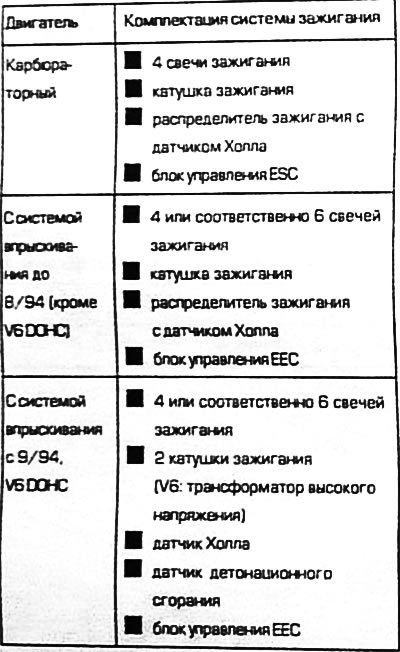The diesel engine does not have an ignition system, because due to the high compression ratio, the air in the cylinders during compression heats up to such a temperature that the fuel injected into the cylinders spontaneously ignites.
Ignition systems have different designs:

ESC (Electronic Spark Control) - Ignition system based on characteristic fields. EEC (Electronic Engine Control) - electronic engine management system with built-in ignition system based on characteristic fields.
Engines with 9/94 and V6 DOHC are equipped with a distributorless ignition system. The function of distributing high voltage to the spark plugs of individual cylinders is performed by fixed electronically controlled parts, which replaced the conventional mechanical distributor with a rotating rotor.
With other engines, the task of the ignition distributor is to distribute the high voltage in the prescribed sequence to the spark plugs and to transmit information about the crankshaft speed and ignition timing via the Hall sensor to the ignition control unit.
The electronic ignition system does not wear out and does not require adjustment as part of maintenance. Due to the presence of electronic parts, the ignition system is very reliable and requires little to no maintenance.
Attention: When working with the electronic ignition system, it is necessary to observe safety precautions, see p. 47.
Visitor comments